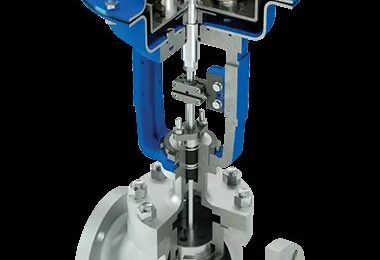Pneumatic Quarter-Turn Actuators: Enhancing Industrial Automation
Introduction
In the world of industrial automation, efficiency, reliability, and cost-effectiveness are essential. Pneumatic quarter-turn actuators have emerged as a game-changing solution for automating ball and butterfly control valves, enabling remote operation through compressed air. Designed to optimize system performance—especially for larger valves—these actuators offer a compelling mix of rugged construction, compatibility with ISO 5211 F07 standards, and relatively low investment costs.
This article explores the key features, benefits, and considerations of pneumatic quarter-turn actuators, providing valuable insights for engineers, plant managers, and automation professionals.
What Are Pneumatic Quarter-Turn Actuators?
Pneumatic quarter-turn actuators are mechanical devices that use compressed air to produce rotational motion, typically 90 degrees, to operate ball or butterfly valves. These actuators allow for precise and reliable valve control, making them ideal for automated systems requiring remote actuation.
They support ISO 5211 mounting flanges, commonly F07, for seamless integration. Equipped with a 17 mm star connection and optional shaft adapters, they are flexible enough to accommodate a wide range of valve designs.
Key Features and Specifications
1. Torque Output & Control Pressure
-
Torque: 74 Nm at 6 bar
-
Control Pressure Range: 6–10 bar
-
Adjustable torque provides fine-tuned valve control.
2. Double-Acting Design
-
Uses compressed air for both opening and closing operations.
-
Ensures enhanced reliability and control in critical systems.
3. Durable Build
-
Housing and cover: Anodized aluminum for corrosion resistance.
-
Internal mechanism: Aluminum rack-and-pinion system for long-term operation.
4. Temperature Compatibility
-
Standard: -20°C to +80°C with NBR seals.
-
Optional: FKM seals for higher temperatures.
5. Air Supply and Port Configuration
-
Ports: G 1/4” air inlets/outlets.
-
Supports Namur solenoid valve mounting for simplified setup.
6. Position Control Compatibility
-
Supports VDI/VDE 3845-compliant switch boxes for position monitoring.
-
Enables better safety, feedback, and automated system integration.
7. Explosion-Proof Certification
-
ATEX-certified (EX II 2GD c)
-
Suitable for hazardous environments such as oil, gas, and chemicals.
Advantages
-
✅ Precise Bidirectional Control: Thanks to the double-acting configuration.
-
✅ Broad Compatibility: Easily fits ISO 5211 F07 valves.
-
✅ Quick Operation: Pneumatic actuation allows for rapid open/close cycles.
-
✅ Simplified Installation: Direct solenoid valve mounting via Namur interface.
-
✅ Visual Position Feedback: Built-in mechanical indicator.
-
✅ Safe for Explosive Areas: Backed by ATEX compliance.
Considerations
-
⚠️ Higher Air Consumption: Double-acting units use more air than single-acting ones.
-
⚠️ Air System Dependency: Requires an external compressed air system and solenoid valve.
-
⚠️ Energy Efficiency: Pneumatics typically consume more energy than electric actuators.
Applications
🔹 Oil & Gas
For remote valve control in pipelines, refineries, and offshore platforms.
🔹 Chemical Processing
Ideal for aggressive chemicals and high-temperature processes.
🔹 Water & Wastewater
Automates flow control for treatment and distribution systems.
🔹 Food & Beverage
Meets hygiene and process automation needs.
🔹 Pharmaceuticals
Precise actuation critical to clean and controlled environments.
Installation & Maintenance Tips
-
✔️ Verify Compatibility: Match flange and shaft dimensions before installation.
-
✔️ Use Throttle Valves: Adjust the rotation speed via outlet throttles.
-
✔️ Routine Inspection: Check for leaks, seal wear, or air pressure drops.
-
✔️ Maintain Lubrication: Reduce friction and extend service life.
-
✔️ Monitor Air Quality: Ensure clean, moisture-free air supply.
Conclusion
Pneumatic quarter-turn actuators are reliable, versatile, and cost-effective tools that enhance automation in industrial systems. With their robust construction, ATEX safety rating, and ISO compatibility, they’re well-suited for demanding environments across numerous industries.
While they do require a compressed air infrastructure and have higher energy consumption compared to electric actuators, their speed, durability, and ease of integration often outweigh these concerns.
As automation continues to evolve, pneumatic actuators will remain a cornerstone technology—driving operational efficiency and safety in the most demanding environments.Know more about Google SEO Directory



Leave a Reply